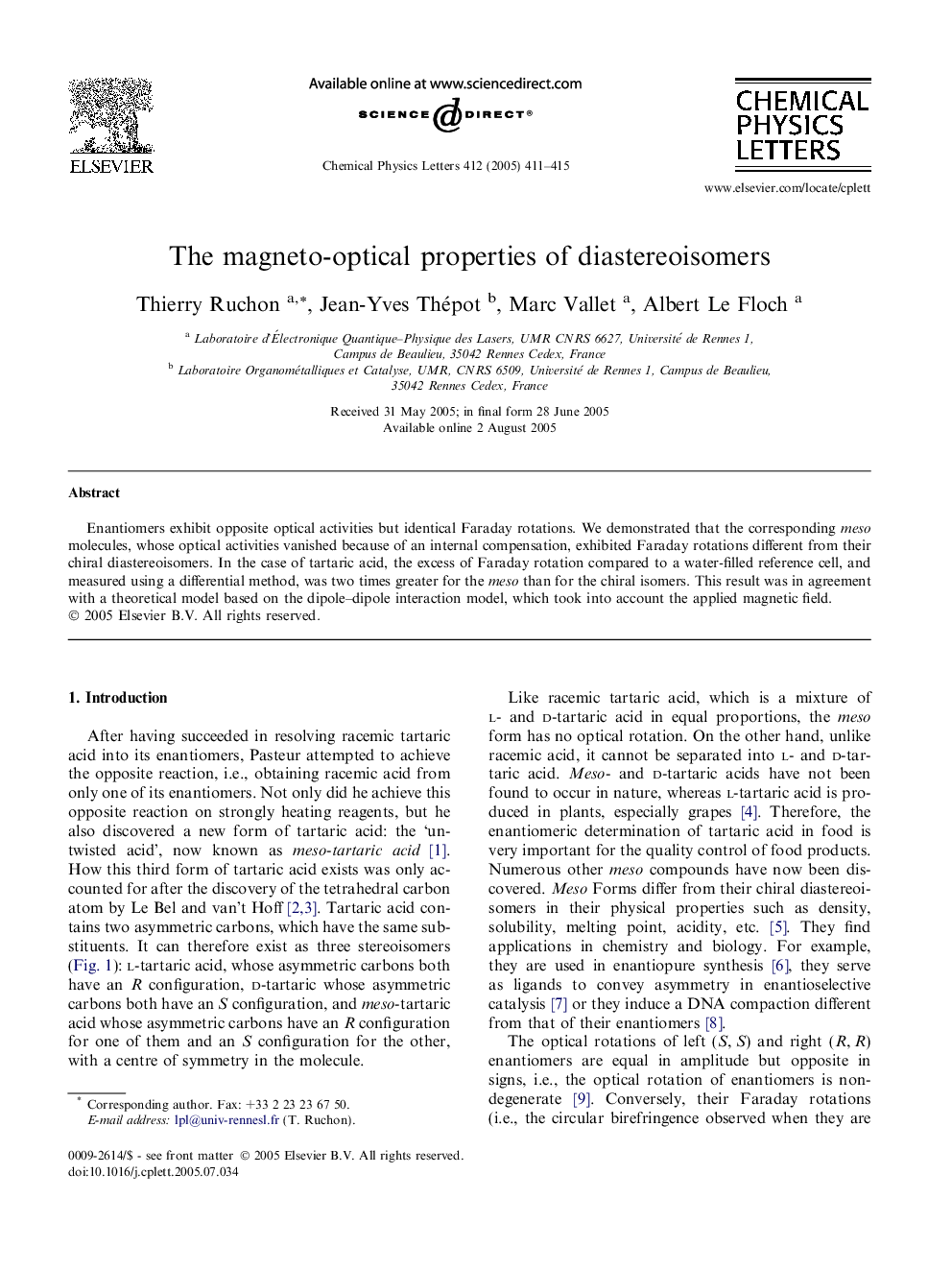| Article ID | Journal | Published Year | Pages | File Type |
|---|---|---|---|---|
| 9577569 | Chemical Physics Letters | 2005 | 5 Pages |
Abstract
Enantiomers exhibit opposite optical activities but identical Faraday rotations. We demonstrated that the corresponding meso molecules, whose optical activities vanished because of an internal compensation, exhibited Faraday rotations different from their chiral diastereoisomers. In the case of tartaric acid, the excess of Faraday rotation compared to a water-filled reference cell, and measured using a differential method, was two times greater for the meso than for the chiral isomers. This result was in agreement with a theoretical model based on the dipole-dipole interaction model, which took into account the applied magnetic field.
Related Topics
Physical Sciences and Engineering
Chemistry
Physical and Theoretical Chemistry
Authors
Thierry Ruchon, Jean-Yves Thépot, Marc Vallet, Albert Le Floch,
